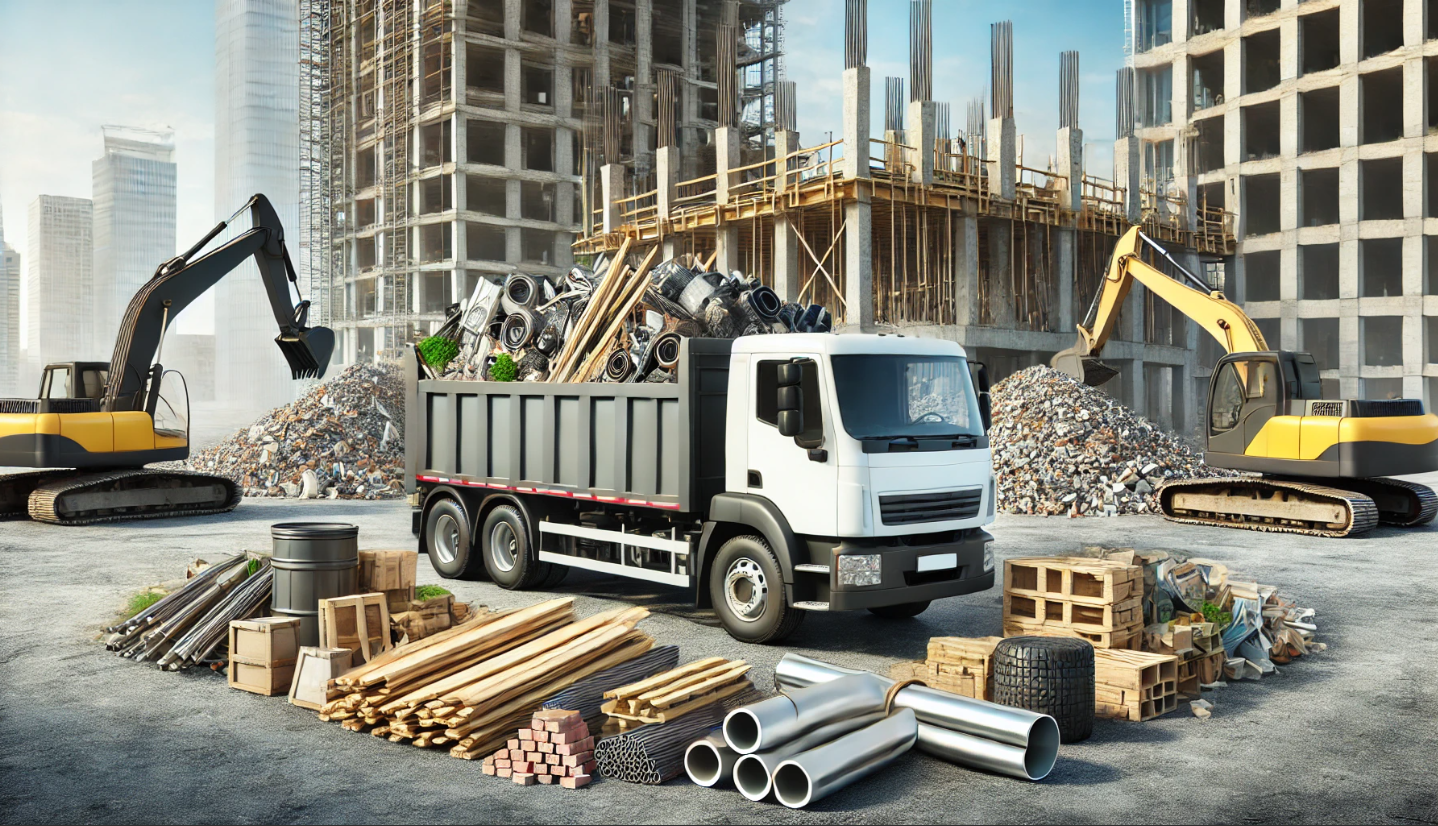
Construction Debris Removal – Efficient Cleanup for Your Projects
Construction projects create significant amounts of debris—broken drywall, wood scraps, metal, and more. Managing this waste is essential to maintaining a safe, efficient worksite and ensuring compliance with disposal regulations. Professional construction debris removal services simplify the cleanup process, saving time and effort while emphasizing sustainability. In this guide, we’ll cover everything you need to know about construction debris removal, including tips, benefits, and eco-friendly practices.
Why Construction Debris Removal is Essential
Proper debris management isn’t just about tidiness; it impacts your project's success, safety, and environmental responsibility.
Key Benefits:
- Enhances Safety: A clutter-free site minimizes risks of accidents and injuries.
- Improves Efficiency: Clear workspaces allow teams to focus on completing the project on time.
- Supports Sustainability: Recycling and reusing materials reduce landfill waste.
- Ensures Compliance: Proper disposal adheres to local waste management regulations.
Steps for Efficient Construction Debris Removal
1. Develop a Waste Management Plan
- Identify the types and quantities of waste your project will generate.
- Set up designated areas for sorting debris on-site.
2. Sort and Separate Materials
- Group items into categories: recyclable, reusable, and general waste.
- Clearly label bins to encourage proper disposal by workers.
3. Partner with a Professional Junk Removal Service
- Choose a company experienced in construction site cleanouts for efficient removal.
4. Schedule Regular Pickups
- Arrange for routine cleanouts to prevent debris buildup and maintain site safety.
5. Ensure Eco-Friendly Practices
- Work with providers that prioritize recycling and sustainable disposal methods.
Common Types of Construction Debris
| Debris Type | Examples | Best Disposal Methods |
|---|---|---|
| Concrete & Asphalt | Broken pavement, bricks, tiles | Crushing for reuse, recycling centers |
| Wood | Lumber, pallets, plywood | Recycling, repurposing, donation |
| Metal | Steel, aluminum, copper | Scrap metal recycling |
| Drywall | Sheetrock, plasterboard | Specialized recycling or disposal |
| Hazardous Materials | Paint, adhesives, chemicals | Certified hazardous waste facilities |
| General Trash | Packaging, plastic sheets | Landfill or incineration |
Eco-Friendly Practices in Construction Debris Disposal
Sustainable construction practices can significantly reduce environmental impact.
Recycling Materials
- Concrete: Crushed into aggregate for reuse in road building or other projects.
- Wood: Repurposed into furniture or mulch.
- Metal: Melted and reused in new construction.
- Drywall: Recycled into new sheetrock or used for soil amendments.
Donation Opportunities
- Excess building materials like wood and fixtures can be donated to nonprofits or resale shops like Habitat for Humanity.
Proper Disposal of Hazardous Waste
- Paint, adhesives, and chemicals should be taken to certified hazardous waste facilities to prevent contamination.
FAQs About Construction Debris Removal
1. How much does construction debris removal cost?
- Costs vary depending on the volume and type of debris, but most services range from $300 to $1,500.
2. Can I recycle all types of construction waste?
- Not all materials are recyclable. Common recyclables include concrete, wood, and metal. Check with your provider for specifics.
3. How do I dispose of hazardous materials?
- Work with certified facilities or junk removal services that specialize in hazardous waste handling.
4. How often should I schedule debris pickups?
- It depends on the project's scale. For larger projects, weekly or bi-weekly pickups are recommended.
5. Are construction debris removal services eco-friendly?
- Many prioritize recycling and reuse, significantly reducing landfill waste.
Contact Us Today for a Free Quote!
We are the experts to call if you need to demolish a house in Lafayette, Indiana. Hippo Demolition is known for getting the job done right. We have the skills and equipment to handle any size or type of property.
We work hard to ensure our customers’ satisfaction. Our team of residential demolition contractors is excellent at what they do. Whether you’re tearing down a house or clearing space for something new, we can help.
We know you want the best, so we always do our best work. Call us anytime at (317) 657 - 8163. We’re ready to help you with your home demolition project today!
